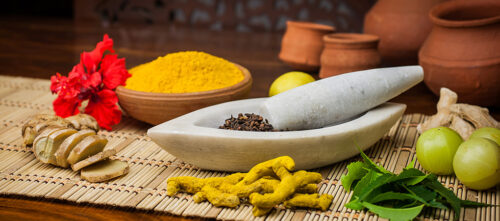Have you ever noticed how some days you feel full of energy while on other days you feel calm and grounded? Or perhaps you’ve experienced times when you felt extremely focused while there were periods when you felt sluggish and lazy? These shifts in how we feel aren’t random. According to Ayurveda, they reflect the natural balance of three fundamental Doshas within our bodies: Vata, Pitta and Kapha. Ayurveda teaches that true health is the state of harmony. This harmony exists between our inner nature and the natural world around us. Every element in nature: air, fire, water, earth, and space have a counterpart in our bodies. When these elements work together in balance, we experience vitality, mental clarity and wellbeing. When they fall out of balance, our bodies send us signals through fatigue, discomfort or illness. The Three Doshas: Vata, Pitta and Kapha Think of the three forces as three essential qualities that keep your body functioning. Each one brings something important to the table. Vata: The Force of Movement Vata is like the wind in your body. It’s the principle of movement, space, and lightness. Whenever something moves in your body, your breath flowing in and out, your heart beating, your thoughts moving through your mind and your digestion happening. Vata governs your nervous system, circulation and the flow of ideas. When Vata is balanced, you feel energetic, creative and mentally clear. You sleep well and wake refreshed. Your digestion hums along smoothly. But when Vata becomes excessive, due to stress, travel, cold weather, or irregular routines, you might feel scattered, anxious or restless. Your sleep might become light and interrupted. This means your Vata needs to be calmed and grounded. Pitta: The Principle of Heat and Transformation Pitta is the fire element in your body. It represents heat, metabolism, digestion, and transformation. Pitta is responsible for breaking down your food into nutrients, maintaining your body temperature, and powering your mental focus and determination. When you’re feeling motivated and sharp, that’s Pitta fuelling your actions. A balanced Pitta gives you good digestion, steady energy, a calm mind, and the ability to tackle challenges with confidence. However, when Pitta flares up from too much spicy food, stress, intense exercise in the heat, or a rushed lifestyle, you might experience heartburn, irritability, or intensity in your emotions. Kapha: The Source of Nourishment and Stability Kapha embodies the qualities of earth and water. It’s the force of nourishment and stability. Kapha builds and maintains your body, your bones, muscles, and tissues. It keeps your body moving and maintains that flow of state. When Kapha is balanced, you feel strong, resilient, and emotionally stable. You have good immunity and endurance and can move through life with patience and calm. When Kapha becomes excessive, often from a sedentary lifestyle, heavy foods, or lack of stimulation, you might feel sluggish, heavy, or emotionally stuck. But like the other Doshas, excess Kapha simply needs rebalancing through appropriate lifestyle choices. Health as Balance, Not Perfection None of the Doshas are harmful in themselves. Each one serves essential functions. The key to wellbeing is balance, having each Dosha present in the right proportion for your unique body constitution. This constitution remains relatively stable throughout your life and influences how your body responds to food, seasons, stress, and lifestyle choices. Understanding your individual constitution is the first step toward maintaining balance and supporting your natural wellbeing. Food and the Six Tastes: Gentle Tools for Balance One of the most accessible ways Ayurveda helps maintain balance is through food and taste. Ayurveda recognizes six tastes: Madhura (sweet), Amla Rasa (sour), Lavana (salty), Katu (pungent), Tikta (bitter) and Kashaya (astringent). Each taste has a unique effect on the doshas. Sweet foods (like grains, milk, and natural sweetness) nourish Kapha. Sour and salty tastes stimulate Pitta. Pungent and bitter flavors can increase Pitta and decrease Kapha. Astringent tastes (like beans and tea) increase Vata. A healthy diet includes all six tastes in moderation, creating a natural balance. This is why Ayurveda emphasizes variety and moderation rather than strict rules. A healthy diet includes all six tastes in moderation, creating a natural balance. It’s not about perfection; it’s about awareness and gentle, consistent choices. Beginning Your Journey Understanding Ayurveda is like learning a new language for listening to your body. Start by noticing how different foods, seasons, and activities make you feel. Do you feel more energized or more grounded? More focused or more scattered? These observations are your body’s wisdom speaking. We need to remember, Ayurveda isn’t about becoming rigid or obsessive. It’s about cultivating awareness and making small, sustainable changes in our daily lifestyle. As you learn more about Vata, Pitta, and Kapha, you’ll discover that Ayurveda isn’t something distant or complicated, it’s a natural state waiting to be rediscovered through balance and harmony with nature. For enquiries regarding consultations, products, Agni Awakening Program and courses, drop a WhatsApp message at +91 99011 26331.








